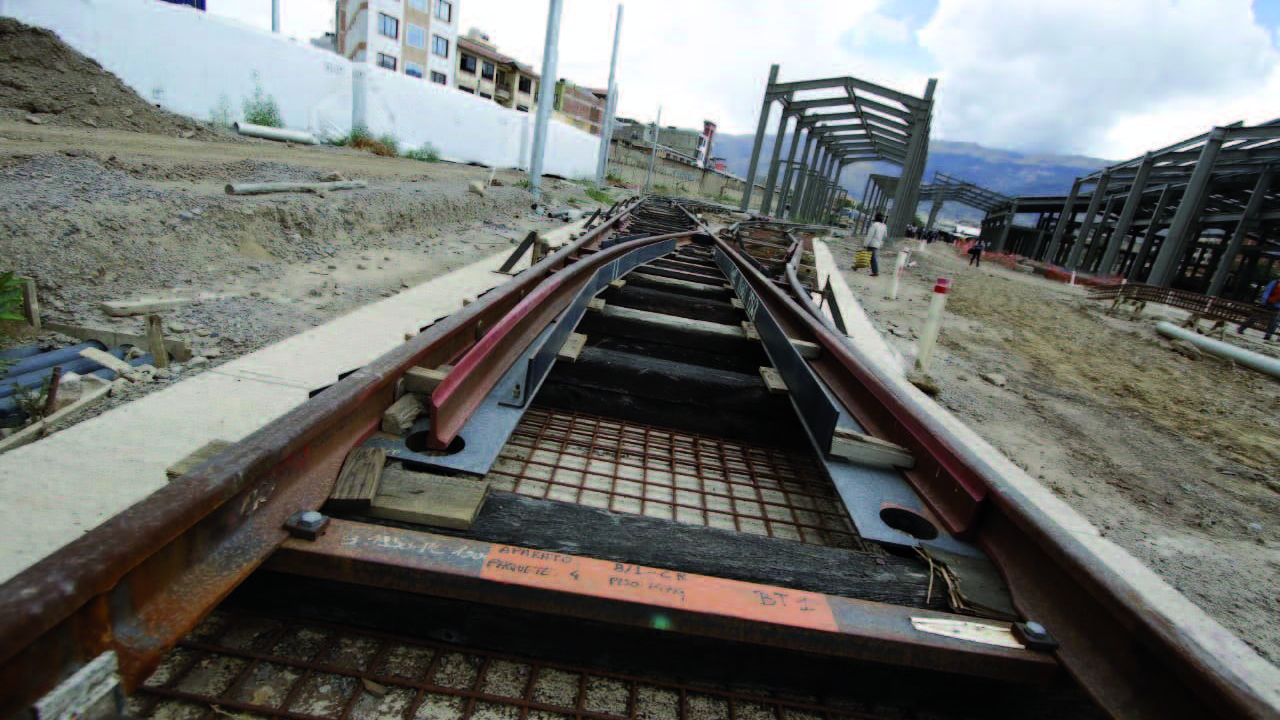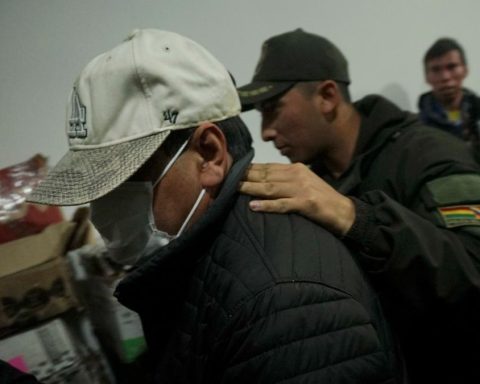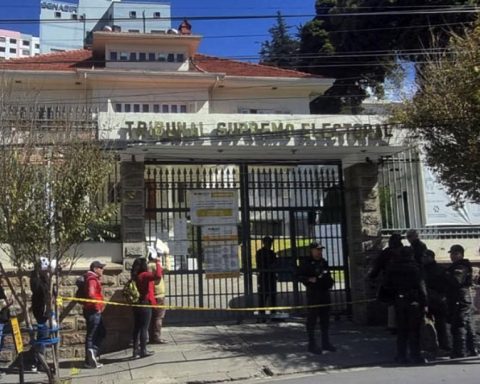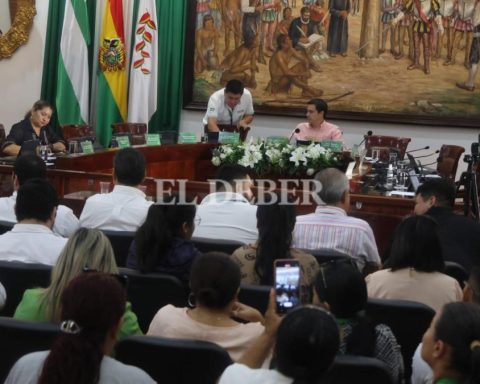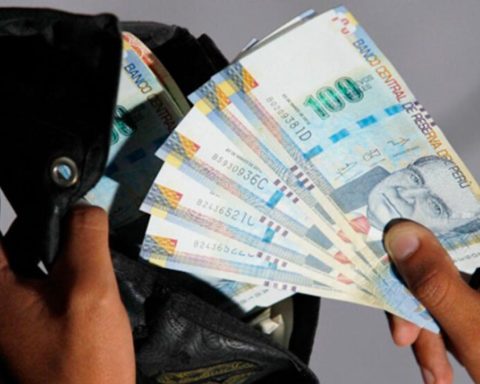Maria Mena M. / Cochabamba
“The works have been stopped since December due to lack of payments. There were internal changes and that is why we do not know who is going to give the orders. They have been carrying debts since last year,” says Javier N., a worker for one of the subcontractors in charge of the construction of the Cochabamba Metropolitan Train. The government mega-project, which seeks to solve the Llajta vehicular traffic, was launched in 2017 with an investment of 525 million dollars
Construction has been paralyzed for three months on the Red and Green lines, as confirmed by workers from three subcontracting companies consulted by Page Seven. The works continue, however, in what will be the San Antonio Central Station (at Avenida 6 de Agosto and Barrientos).
From the Tunari Accidental Association (AAT), the company in charge of the project, they denied that the works are stopped and assured that they comply with the payment of payroll and that the works continue according to the established schedule and deadlines.
“The project continues to move forward. We comply with contractor companies. We are up to date with work commitments,” they reported unofficially.
Photo: David Flores/APG
Paralyzed works
“Until December there was continuity because an important payment was made, but since then there has been nothing. We are a subcontracting company and it is by advance form. It is around two million Bolivians that they owe us”, explains Javier.
For the construction of the Central Station and the Green and Red lines, 22 companies were subcontracted. Not all of them are currently working due to the fact that in some sections the works have already been completed or due to pending debts.
Regarding the bridges of the Green and Red lines, the workers detailed that the electrical installations, signaling and other important aspects are still missing. The works in the substations of both lines are also stopped.
While the Yellow line, the most conflictive, still does not have a final design due to observations from institutions and OTB that live around that line, due to the impact it would generate on the Rocha River.
“They told us that they are making arrangements with the government. They paid us a part, but not all of it. It was a mockery. The situation is similar with the other subcontractors”, she reiterates.
Another subcontractor is about to cancel the contract because the ATT has not yet paid what is owed. “We are in termination of contract for non-payment. The project is not going well, they are failing on the part of the Tunari because they are not complying with their subcontractors and that will have consequences in the long run. The bad thing about them is that despite having debts, they insist that we have to work,” says Ramiro N.
The workers do not announce pressure measures, as happened on other occasions. They maintain the hope that in the following weeks the AAT will fulfill its obligations.

Photo: David Flores/APG
ecological train
The Cochabamba Metropolitan Train will link the municipalities of Sipe Sipe, Colcapirhua, Vinto, Sacaba and Cercado. It consists of three lines, Red, Green and Yellow. The entire project will have a length of 42.17 kilometers.
On January 20, in its rendering of accounts, the Ministry of Public Works reported that the programmed budget for the ecological train of Cochabamba is 525,104,622 bolivianos. The executed budget is 435,688,376 bolivianos and the progress of the project reaches 72%.
“In the department of Cochabamba, 2,086,930 inhabitants will benefit. In the municipalities of Sipe Sipe, 47,641, Vinto 59,495, Colcapirhua 52,847, Quillacollo 178,692, Cercado 841,276 and Sacaba 182,682 inhabitants”, said the Minister of Public Works, Édgar Montaño.
The departmental assemblyman Sergio de la Zerda (MAS) says that there is “considerable progress” in the works. “The Red line is more than 90% complete, the Green line more than 70%, and the first two kilometers of eight have already been completed. La Amarilla is delayed by the opposition of Mayor Manfred Reyes Villa. On the other hand, the Central Station is almost finished as well as the administrative building”, he affirms.
The project consigns 12 bidirectional trains that will travel at a speed of 45 kilometers per hour, but will be able to reach a maximum of 80 kilometers. Each wagon -of three modules- will have capacity for 376 passengers (310 seated and 66 standing). There will be space for four wheelchairs or bicycles.
The Red line is the shortest of the three. It will only travel 5.5 kilometers from the central station of San Antonio (La Cancha area) to the Faculty of Agronomy of the Universidad Mayor de San Simón. It will have six stops or stops that will be in El Arco (kilometer 2 of the Petrolera), in Santa Bárbara, the Vidriolux factory, the OTB Universitario Bajo, the Polytechnic neighborhood and in the Faculty of Agronomy.
La Verde is the longest with 27 kilometers. It will start in Suticollo, Sacaba, to the central station of San Antonio. It will have 19 stops and four substations in the municipalities of Sipe Sipe, Colcapirhua, Quillacollo, Vinto and Suticollo.
The Yellow line is the most conflictive because it enters through the Rocha River. It will have 11 stops, a substation and will travel 10 kilometers. His works are delayed because to date his line has not been defined.
“There are fundamentally delays in the Yellow line, but this is due especially to the fact that the mayor of Cochabamba, Manfred Reyes Villa, previously opposed the layout of this road, we do not know with what intentions. Finally, our Ministry of Works, under the protection of various professional associations, managed to establish a line, but the authorizations of the municipality still remain,” says Assemblyman De la Zerda.
Last September they carried out tests on the Red Line and part of the Green Line. The results were described as successful by the Technical Unit of Railways and the AAT. The authorities anticipate that this year both lines will be inaugurated.
Page Seven tried, on several occasions, to contact the Planning Secretary of the Mayor’s Office, Mijaíl Mercado, but he did not respond. Neither did the spokesman for the Technical Unit of Railways, Control and Monitoring of the Train.

Photo: David Flores/APG

Central train station.
Photo: David Flores/APG
“The de facto regime paralyzed the works in 2020, paying only two payrolls in one year. As soon as we recovered democracy, our government decided to reactivate the work, and only in the first months six unpaid bills were paid. Currently the works are not paralyzed, although there are debts that our national government is making efforts to honor as quickly as possible, “says MAS assemblyman Sergio de la Zerda.
The workers agree that before the post-election conflicts of 2019, during the government of Evo Morales, the payment of the payroll was up to date, but during the transition government the disbursements were suspended. After the return of the MAS with Luis Arce, they thought that the pending accounts would be settled, but it was not so.
“They have changed all the people (in the Railway Technical Unit and in Control and Monitoring of the Metropolitan Train) and that is why the delay is, they are just getting to know how they work there. The delay comes since Evo left. With the transition government they no longer paid and with Arce they are trying to catch up, but there are still debts,” said one of the workers.
It is not the first time that subcontracted companies are owed. In the middle of last year, the workers blocked different avenues as a measure of pressure due to six-month debts.
De la Zerda highlights the benefits that he foresees the metropolitan train will have when it comes into operation.
“It is an ecological, safe, accessible and inclusive transport that will partially solve the serious problem of public transport in Cochabamba. It was promoted by the then president Evo Morales and by the former governor Iván Canelas with the aim of creating sources of employment in the region and injecting a strong dose of public investment resources”, affirmed the MAS assemblyman and announced that a model of management.
Authorities foresee the authorization of two lines of the Train in September.
